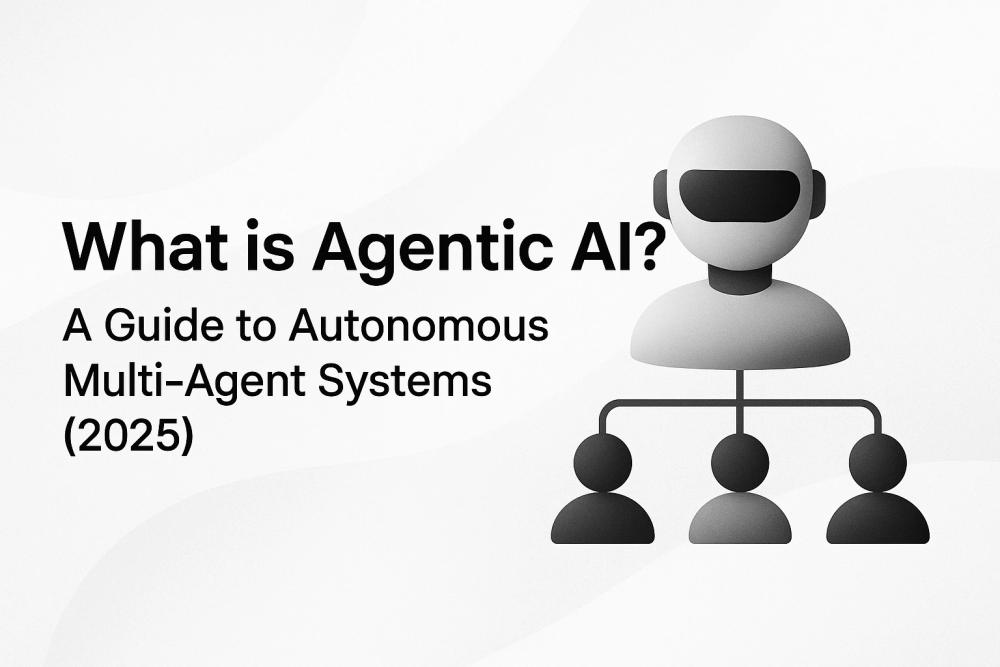
The Ultimate Guide to AI Agents (2025)
2025/06/05

A deep dive into Agentic AI, autonomous workflows, and multi-agent systems (MAS). Learn how AI “teams” collaborate and discover frameworks like CrewAI and AutoGen.
Human-AI collaborative content architect and AI Vibe Marketer with years of marketing experience, focusing on applying AI technology in marketing growth. Helps others leverage AI technology for marketing through sharing business insights, growth strategies and personal practices.

2025/06/05

2025/06/25

2025/06/26

2025/06/25
You've likely seen what a single AI agent can do. It can draft an email, analyze a document, or even write a piece of code. But what happens when a task is too complex for one agent? What if you need an AI to not just perform a task, but to run an entire company department?
This is the leap from a single "digital employee" to an autonomous "digital team."
Welcome to the next frontier of artificial intelligence: Agentic AI. This guide is for the developers, product leaders, and researchers who have moved beyond the basics and are ready to explore how complex AI systems think, collaborate, and solve problems. We will demystify the core concepts of Agentic AI, autonomous workflows, and multi-agent systems, providing a clear map to this exciting new territory.
This is an advanced guide. If you need a refresher on the fundamentals, we recommend starting with our Ultimate Guide to AI Agents.
To grasp the future of AI, we must first understand three interconnected concepts that define this new paradigm.
Agentic AI refers to AI systems that can proactively and autonomously plan, reason, remember, and execute complex, multi-step tasks to achieve a high-level goal. Unlike a simple "tool-using" AI that requires a specific command to act (e.g., "summarize this text"), an agentic system possesses a degree of "self-direction." You provide the objective, and it determines the necessary steps to get there.
An Agentic Workflow is a sequence of tasks executed by one or more AI agents to achieve a larger goal. It's the operational blueprint for Agentic AI.
A Multi-Agent System (MAS) is the most advanced form of Agentic AI, where multiple independent, autonomous agents interact with each other within a shared environment. They can collaborate, negotiate, or even compete to solve problems. This is a true "AI team," where the collective intelligence and capability can far exceed that of any single agent.

The shift towards MAS is driven by the need to solve problems that are beyond the scope of a single, monolithic AI model. The core advantages are:
How do these digital teams coordinate without chaos? They rely on several core principles, which are deep topics in themselves.
To truly understand the architecture behind how these AI teams communicate and make decisions, dive into our Deep Dive on Multi-Agent Systems (MAS) Architectures.
Of course, giving agents this level of autonomy raises important questions. We discuss these in our guide to The Ethics and Safety of AI Agents.
The rise of Agentic AI is powered by a new generation of open-source frameworks that make building these complex systems accessible to developers.

Ready to get your hands dirty and build a workflow with these tools? Check out our Practical Guide to Building with CrewAI and AutoGen.
While still an emerging field, advanced agentic systems are already being applied to solve complex problems.
This powerful new frontier also comes with significant challenges that the AI community is actively working to solve:
We are at the beginning of a paradigm shift. The focus of AI development is moving from creating powerful individual tools to orchestrating intelligent teams. Agentic AI and Multi-Agent Systems are the foundation for this future, paving the way for an autonomous "digital workforce" that can tackle challenges of unprecedented scale and complexity.
Understanding these concepts is no longer just an academic exercise; it's essential for anyone building or investing in the future of technology.
The journey to building an autonomous workforce starts with understanding the individual agents that will form it. Explore the most advanced agents on agenthunter.io today, as they are the building blocks for the future.
To stay on top of this rapidly evolving field, subscribe to our newsletter.